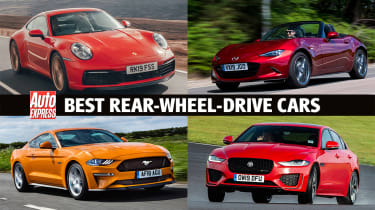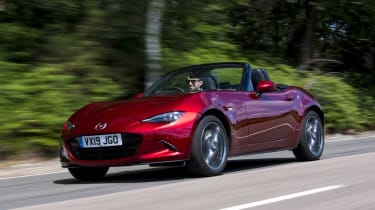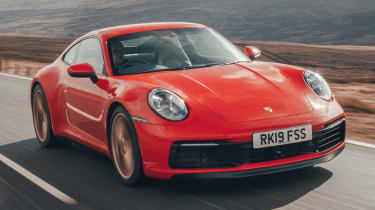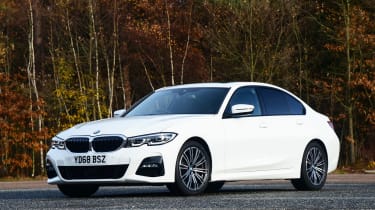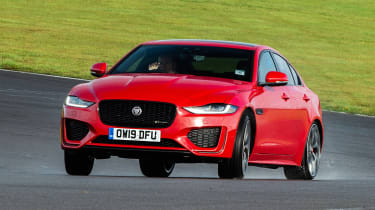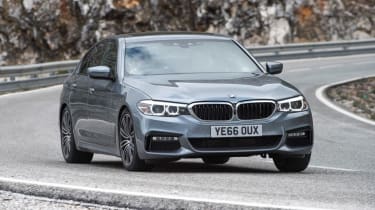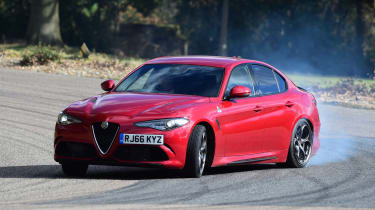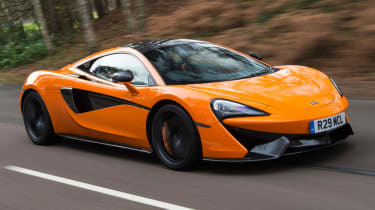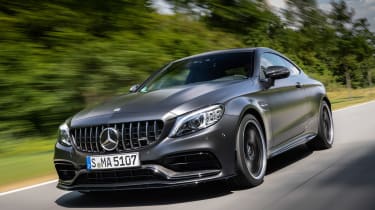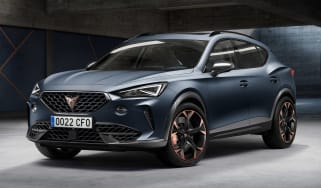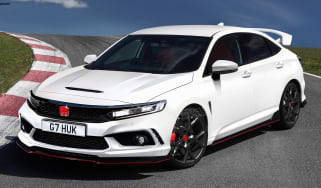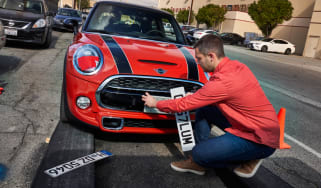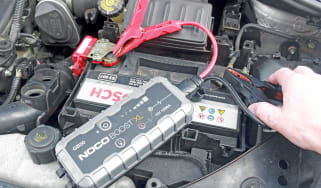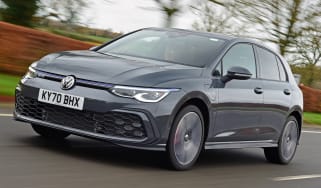Best rear-wheel-drive cars 2020/2021
Rear-wheel drive is supposed to be the drivetrain layout that delivers the most fun. Here are 10 cars that do exactly that
It wasn't so long ago that the majority of cars sold were rear-wheel drive. Today, the transmission layout that sends power to the rear wheels exclusively is much less commonly used and often the preserve of cars and manufacturers that like to put an emphasis on driving pleasure, rather than just getting from A to B. This means that the best rear-wheel drive cars are among the most fun cars on the road to drive.
But what makes rear-wheel-drive cars so entertaining for their drivers? Well, the main benefit is that the front wheels are only dealing with the steering, while the rears are getting the power to the road. In front-wheel drive cars, everything is happening up front, while the rear wheels are essentially just along for the ride, and this demands compromises. With rear-wheel drive, that compromise simply isn't an issue.
The other benefit of a rear-wheel drive layout is that a car in this configuration should have better balance, with the car's weight more evenly distributed between the front and rear wheels. Whether the car is mid or front-engined, having some of the mechanical pieces at the back will deliver this improved balance.
Controlling a rear-wheel drive car
While a rear-drive layout delivers driving fun, it can also be more tricky to handle on the limit. While a front-wheel drive car will tend to turn to understeer (the front end of the car pushing forward instead of turning) when it loses grip in a corner, a rear-drive car will get unbalanced at the rear, causing the tail of the car to swing out into oversteer.
Oversteer is controlled by applying lock in the opposite direction of the corner you're taking. Braking can amplify oversteer, which can cause the car to spin out if you're not fast enough to react. If you do catch it in time, you might be tempted to apply more power to turn a potential skid into a drift, although this is a lot trickier than the sideways antics of various TV shows and YouTube videos would lead you to believe.
However, with the advent of smarter electronic driver aids, rear-wheel-drive cars don't necessarily need to be lairy on a trip to the shops. Keep all the assistance systems on, and you're never likely to encounter oversteer in even the slipperiest conditions.
Rear-wheel drive options
Do a search for rear-wheel drive new cars, and you'll discover a wide variety of models on offer. The front-engine/rear-drive the Caterham Seven 160 is a great introduction to sports car driving at the bottom end of the scale. It's the classic two-seater roadster, and its small Suzuki engine is plenty powerful enough for you to have some serious fun.
The Mazda MX-5 delivers a similar experience in a far more modern package that you could use everyday, and it only starts from a couple of grand more.
Elsewhere, BMW and Mercedes are renowned for favouring rear-wheel drive layouts in their executive cars and there are plenty of high-end rear-drive sports cars on sale. Whether they're front, mid or rear engined, they have all been designed with driving thrills at the top of the agenda. Many come with a manual gearbox to maintain a pure driving experience, but the best auto-equipped models don't lose any of their engagement due to the fitting of a self-shifter.
So what do we think are the best rear-wheel-drive cars on sale? Here's our eclectic top 10, although all of these cars will put a smile on your face...
Mazda MX-5
If you’re in the market for a cheap, small, rear-drive sports car, the Mazda MX-5 is likely to be top of your list. Since its introduction in 1989, Mazda has honed the MX-5 across four generations but retained the same formula which made the original version so popular.
The current generation was released in 2015 and received a facelift in 2018. While many cars become larger and heavier as each new generation arrives with the addition of safety technology and on-board gadgetry, the Mk4 MX-5 is actually 100kg lighter than its predecessor.
Mazda’s latest SkyActiv-X engine delivers a power boost. The 2.0-litre, naturally-aspirated unit pushes out 181bhp and revs up to 7,500rpm. In short, it boasts more than enough power for the MX-5 and with no forced induction it’s happy to rev. With the sweet-shifting six-speed manual gearbox and nicely weighted steering, it’s hard to pick fault with the powertrain.
Due to the MX-5’s tiny proportions and focus on lightweight design, the ride can feel quite firm on long drives and the boot isn’t the most practical. The interior also feels quite dated, but these issues are quickly forgotten once you’re on a good road and making the most of the wonderful chassis Mazda has developed over 30 years.
Porsche 911
Porsche’s most famous nameplate is towards the upper end of the sports car segment, but largely worth it thanks to a mix of practicality, refinement and supercar-rivalling performance.
The current 992-generation 911 was released in 2019 and is available in Carrera, Carrera S, Carrera 4S, Turbo and Turbo S guises. Cabriolet and Targa versions of each model are also available and a track-focused, hardcore GT3 is on the way with a GT3 RS and GT2 RS likely to follow.
The standard 911 Carrera offers enough performance for most. The Carrera S’ 444bhp 3.0-litre, flat-six, twin-turbocharged engine is detuned to 380bhp in this entry-level model but the Carrera will still crack 0-62mph in four seconds.
In terms of driving engagement, not much comes close to the 911. The electronically-assisted steering is one of the most communicative on sale and the ride quality is excellently balanced between compliance over rough roads and the stiffness needed to be precise when you push on.
BMW 3 Series
It’s no secret BMW’s 3 Series has been one of the best handling saloon cars since its inception, but the current one is better than ever. The 3 Series is now in its seventh iteration and is a proper driver’s car. It offers a great combination of performance, driving dynamics, low running costs, on-board tech and improved refinement.
Trim levels are simple and easy to understand - you pick SE for comfort, Sport if you like the stylistic middle ground and aggressive M Sport if you really need to show off in the company car park.
There's the usual strong lineup of petrol and diesel engines, with the addition of a frugal plug-in hybrid version, while the latest car's interior reflects the excellent, high-quality feel of the bigger, more expensive 5 Series and 7 Series.
The 3 Series is a more driver-focused proposition than its Audi A4 and Mercedes C-Class rivals, with BMW managing to create a more comfortable ride, without sacrificing any of the driving entertainment its compact exec is famed for.
Jaguar XE
While the old X-Type was little more than a re-bodied Ford Mondeo, Jaguar showed it was capable of making a great handling saloon car while flying solo when it launched the current XE in 2015.
The Jaguar XE became a segment leader in terms of driving dynamics when it was launched and a facelift in 2019 confirmed its position near the top of the compact executive class.
A sophisticated double-wishbone front suspension system and a multi-link rear axle helps deliver excellent handling, precise but comfortable when you need it to be. The chassis gives you plenty of feel and despite the rear-drive nature of the XE, there’s enough grip in the bends to keep things sensible.
Only one gearbox is offered on the XE; an eight-speed automatic. It’s smooth during shifts in full auto mode and when you engage semi-auto mode the changes feel quick and decisive.
BMW 5 Series
The 5 Series has been a key part of BMW’s line-up since 1972 with sales reflecting its popularity throughout the decades. The M5 super saloon is predictably the most fun, but the cheaper and more conventional diesel, petrol and even hybrid models are fun in their own right.
Utilising aluminium and carbon fibre in its construction, the 5 Series is surprisingly light and rigid for its size. The bodyshell is all-new in the current model and the weight reduction is a big benefit in the corners, where the 5 Series comes into its own. The lack of a manual gearbox may disappoint some driving enthusiasts, but the ZF eight-speed automatic more than makes up for it.
The 5 Series pretty much sets the benchmark for driving dynamics in this sector - the steering delivers good feedback, while there's huge levels of grip to inspire confidence through even the tightest of corners.
Alfa Romeo Giulia Quadrifoglio
Petrolheads waited a long time for Alfa Romeo to deliver something like the Giulia Quadrifoglio.
The BMW M3 had the sports saloon segment wrapped up until the hot Giulia came along in 2016. The Italian car boasts 503bhp from its 2.9-litre twin-turbo V6 - an engine many suspect to have direct links to Ferrari itself.
The powerplant is monstrous and fires the Alfa from 0-62mph in 3.9 seconds, then onto a 191mph top speed. But it’s not just in a straight-line where the Giulia Quadrifoglio impresses.
There’s copious amounts of carbon-fibre to keep weight down and rigidity up. The steering is pinpoint and there’s lots of front-end grip, turn the traction control off and you’ll have to keep your right foot in check to restrain the tail-happy nature.
It does come with a clever torque vector differential as standard to shift torque to the outside wheel in a bend and keep things stable. With 50:50 weight distribution, the Giulia Quadrifoglio is a well-balanced car and a rewarding car to drive, if you’re confident with the supercar-baiting performance on offer.
Toyota Supra
The previous generation ‘A80’ Toyota Supra is the darling of the internet and a 20-year hiatus of the Supra nameplate only cemented its position in petrolhead folklore.
This new model certainly had a lot to live up to and needed to fight off tough competition from Alpine’s A110 and the Porsche Cayman 718, too. With help from BMW, which based its Z4 on the same technology, the Toyota Supra was reborn and quickly impressed those who got behind the wheel.
Much has been made of Toyota’s decision to source BMW parts (namely the 3.0-litre, twin-turbo, 335bhp straight-six), but the engine itself is a good one. The Supra will crack 0-62mph in 4.3 seconds and has plenty of punch to give it a playful edge.
The agility on offer means you can push the Supra hard in the corners and should the rear end step out, a responsive steering rack means you can neatly gather any oversteer up. The new Supra will feel familiar to anyone who’s driven a modern fast BMW, which is no bad thing.
McLaren 570S
McLaren’s 570S is a well-rounded supercar, offering a surprising amount of useability mixed with blistering performance.
The 570S rivals the likes of the Audi R8 V10 and Porsche 911 and focuses on driver engagement to stand out from the crowd. The carbon-fibre tub ‘MonoCell ll’ chassis and 3.8-litre, twin-turbocharged V8 engine are found in a variety of McLarens. In the 570S, the engine is tuned to 562bhp - more than enough to get you grinning ear-to-ear once you push the accelerator.
The adaptive damping is well-suited to British roads and helps make the 570S more comfortable than most other supercars. The level of firmness can be switched from ‘normal’, ‘sport’ and ‘track’ which also sharpens up throttle response and the gearbox for quicker shifts.
The steering is a masterpiece in the 570S. The weighting is spot on and responsiveness is confidence-inspiring. There’s tremendous amounts of feel through the wheel so you’re able to make adjustments at will.
Of course, McLaren offers an even more focused version of the 570S called the 600LT, but while that car is also another brilliant, rear-wheel drive supercar, the 570S will be more than enough for most.
Ford Mustang
If you're after turning heads, but don't want to spend mega bucks, then the Ford Mustang could provide the answer.
The Mustang range starts from just under £40,000, and for that you have access to the entry 2.3-litre version with 286bhp. However, spending around £3,000 more puts you where you really want to be, which is behind the wheel of the 'proper' 444bhp 5.0-litre V8 GT Fastback coupe.
The V8 engine is thirsty, but it's a price worth paying for to hear the flagship car's dramatic soundtrack and to experience the slightly addictive performance.
Ford has bestowed the sixth-generation model with independent suspension, which means the Mustang is as good in the corners as it is in a straight line, while cars with manual transmission have the benefit of four selectable driving modes - Normal, Sport+, Track and Snow/Wet, adjusting the car’s throttle, steering and stability control settings.
Mercedes-AMG C63
Mercedes now only includes the more powerful C63 S version for UK sale, but it remains one of the best rear-wheel drive performance options money can buy.
There's a 4.0-litre, twin-turbocharged V8, developing 503bhp and 700Nm of torque - enough to propel the coupe from 0-62mph in four seconds flat and onto a derestricted top speed of 174mph.
Given the level of refinement, you might be surprised at how the C 63 copes in the bends, it’s become an out-and-out sports car. The steering feel is direct and there’s enough grip to keep things stable in the corners, but with nine-different modes for the traction control you’re able to alter just how much slip you want from the rear wheels.
The adjustability of the C 63 S' chassis doesn’t compromise everyday useability. The ride isn’t too unforgiving and while it does fidget when cruising, the overall level of comfort is more than acceptable for a 503bhp sports car.
What's your favourite rear-wheel drive car? Let us know in the comments below...
